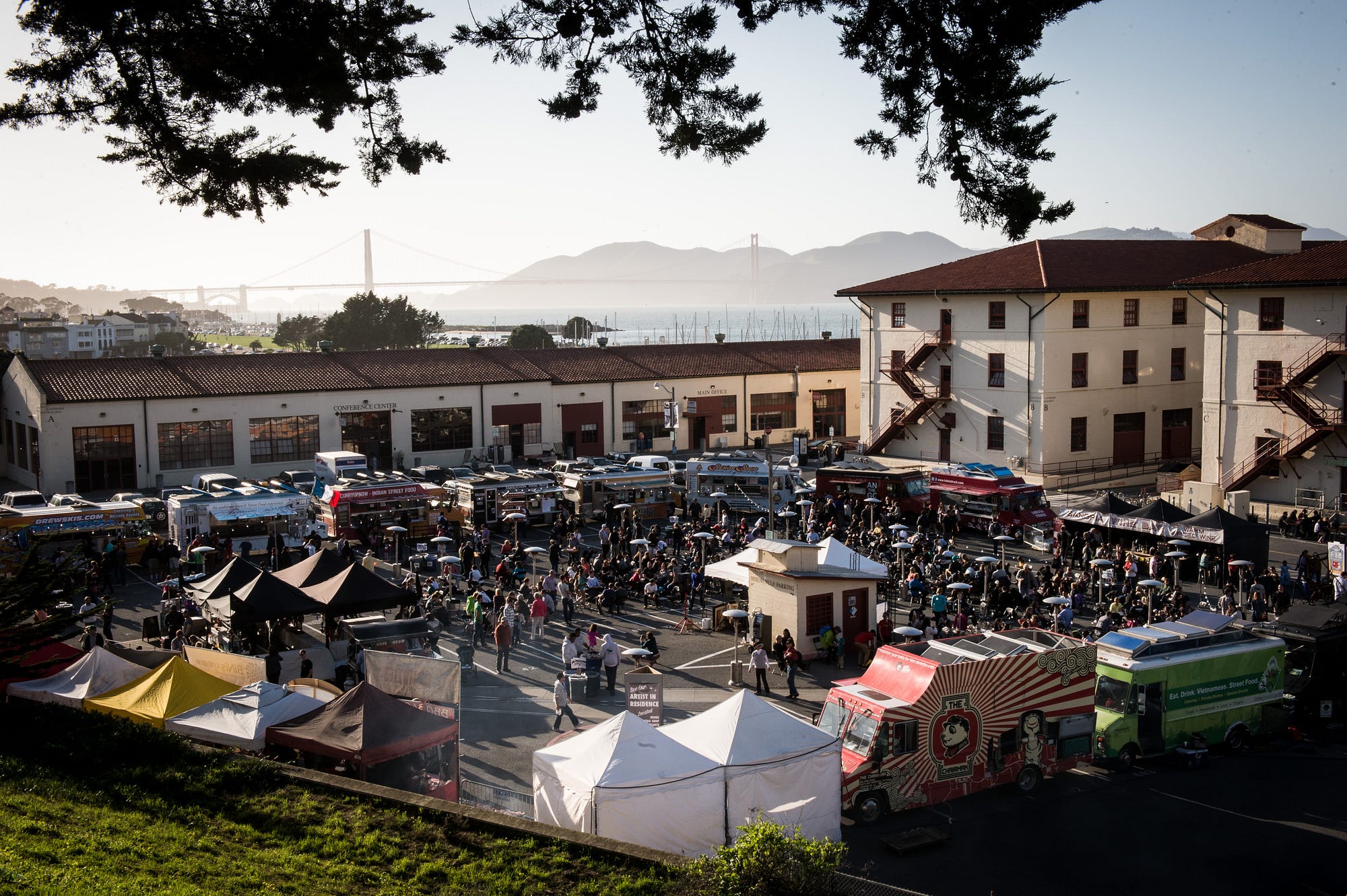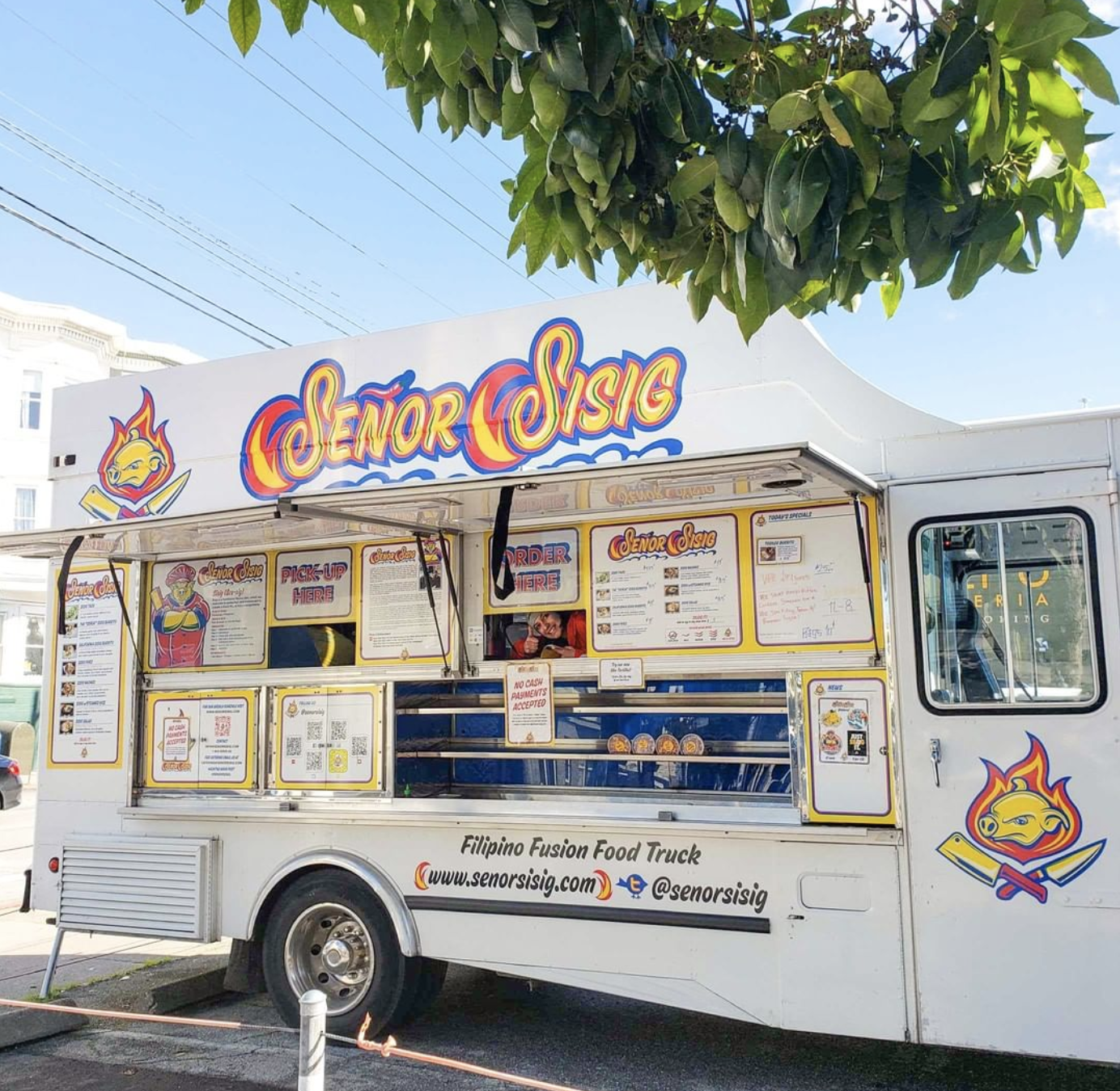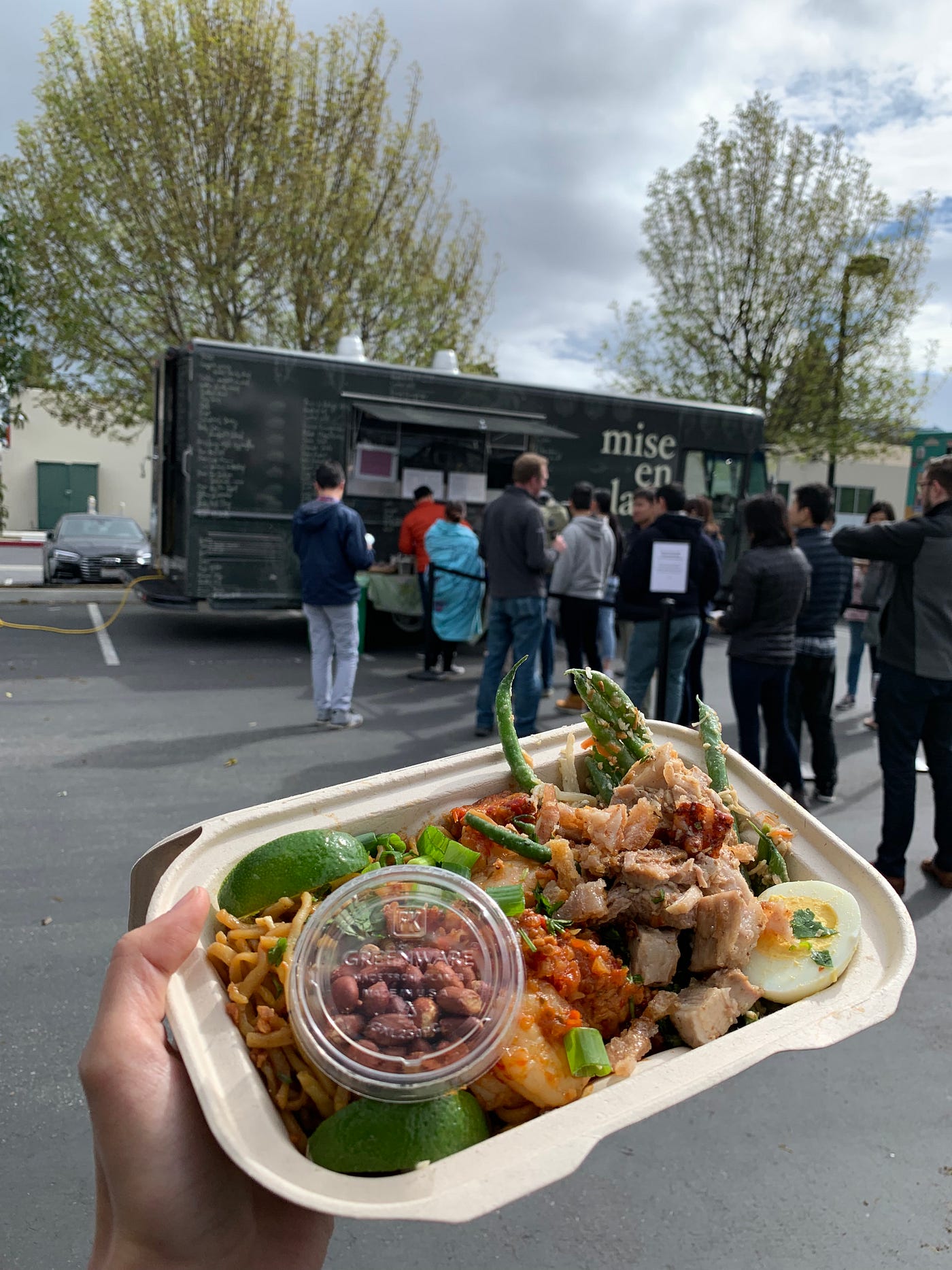
In a city as culinarily obsessed as San Francisco, a food truck is no longer a novelty. Mobile food vendors have become a staple in the City by the Bay, just as they have in multiple metropolitan hubs across the country, so much so that they make up their own little industry.
In a report published December 2018 by Off the Grid, the company behind SF’s food-truck markets, food trucks across the nation generated $800 million in revenue in 2017, with a predicted revenue of $985 million in 2019. Despite the staggering success and regulatory hurdles fixed over the past decade, though, running a food truck in the Bay Area is still no joke—and is far from being as seamless as it should be.
To an unknowing outsider like me, I imagine that the process of running such a business looks something like this: select a simple dish, cook out of your truck, park at a designated crowded space, sell out to lines of SF’s food-truck-loving crowds and repeat. Right? Not so much, according to Señor Sisig owner Evan Kidera, who’s been running his mobile chain of Filipino burritos and tacos for the past nine years.
Turns out, it’s far from being that simple. Especially in San Francisco.
“There’s a misperception that street-food vendors don’t have any overhead at all, and that it’s easy,” said Kidera. “It’s really not as easy as pulling up to a location and serving; it’s hard work. If you don’t have the passion, it can wear you down.”
Running a food truck in the Bay Area, as I was quickly learned while reporting this story, comes with more challenges than you’d expect. In fact, Food Truck Nation, an extensive report published by the US Chamber of Commerce, found San Francisco to be one of the five most difficult cities out of 20 major American cities surveyed. The report ranked 20 cities on the basis of three factors: difficulty of obtaining permits and licenses, complying with restrictions and operating a food truck. San Francisco came in at 18th, beating only Boston and Washington, DC, with a low score of 35.1 out of 100.
A common, seemingly simple issue, for instance, is the matter of space. For Kidera, that means a space to park.
“A lot of the times, we pull up, and our parking spot is taken, even with our permits,” he said. “I’ve brought up the issue with the MTA, especially whether we are able to have a sign to indicate that our parking space is ours.”
It’s also important to note that food trucks in San Francisco can’t operate within 75 feet of a brick-and-mortar restaurant, something quite unique to SF. The struggle of finding parking for your truck overnight is also real — some food-truck owners find themselves driving back and forth to Hayward and Oakland because of the lack of space in the city.

For Siska Silitonga Marcus, founder of Indonesian food truck ChiliCali, it’s cooking space that’s lacking. Food-truck owners don’t actually make all their food in their trucks — they usually make it in a commercial kitchen first and just prep it in the truck. And commercial-kitchen rents in SF, as with a majority of property rentals, are extremely expensive, coming in at around $2,000 per month on the low end. That doesn’t even include other additional fees that may be charged, such as equipment and fridge space.
“To rent a commercial kitchen is easy when you have money, but if you’re just starting out and don’t really have the funds, it can really be a challenge. And a commercial kitchen is the bloodline for a food-truck owner.”
According to the Food Truck Nation report, it takes $28,642 on average to operate a food truck per year in San Francisco. In contrast, it takes only an average of $5,410 to operate a food truck per year in Portland, the city with the best ranking in the report.
Then, there is the matter of permitting. Currently, the City of San Francisco has 431 approved mobile-food-facility permits. Yet despite this high number, permitting for a food truck remains a tedious process (at least 32 separate procedures) and also not very cost friendly. According to the San Francisco Business Portal website, a food truck needs 11 permits to get up and running, including the Mobile Food Facility Permit from the SF Department of Public Health. Permits and licenses can accumulate to a minimum cost of $3,481 before owners even drive the truck off the lot.
Kidera, who has worked to obtain multiple permits for Señor Sisig’s multiple trucks, attests to waiting periods that can last as long as nine months.
Fortunately, businesses such as Off the Grid take some of the burden off in terms of permitting. Off the Grid regularly holds events across the Bay Area that bring together multiple food trucks in one venue, allowing mobile entrepreneurs to operate without having to obtain all the necessary permits.
“The value to our creators is that we take care of the hard stuff, and as long as they have the appropriate health and operating permits, they can just show up and serve,” said Matt Cohen, founder of Off the Grid.
The fact that events like Off the Grid are a constant now in SF truly indicates the maturity of the industry since the initial boom in the early 2010s. Off the Grid’s report indicates that California remains the highest-grossing state for mobile-food entrepreneurs, with a reported $201 million market size for mobile food in 2017. In SF alone, there are at least 184 food trucks.

However, Kidera has observed that it’s getting more challenging to enter the industry. “Now, it’s not as exciting just because you have a food truck. To succeed in this business, you have to have something that really draws people in,” he said. Cohen, too, voices similar thoughts, saying that food trucks that start today have to be “strong businesses with compelling products run by skilled professionals.”
Despite the challenges of running this type of business, it still proves to be a popular way to enter the food industry. Marcus is currently getting ChiliCali up and running while being part of Instrucktional, Off the Grid’s food-truck incubator program in partnership with Google. Participants will be provided with the same resources available to food trucks in Off the Grid’s network and mentorship. Marcus finds the first portion of this competitive program extremely valuable: the chance to test their culinary concepts, specifically on tech campuses where employees enjoy the benefit of dining for free. “If you can’t even get people to line up for free food,” she said, “you should probably forget about it.”

Recipe development is another benefit of the program, specifically ones that can easily scale. As part of the program, participants have to serve 300 portions to tech employees every day. Marcus had thought that mi goreng, a dish she could attempt at home, would be simple enough to scale. Turns out, she was mistaken — boiling, blanching, then frying 75 pounds of noodles (which comes out to 300 portions) every day takes a lot more energy and time than, say, serving steamed rice. Marcus tells me she is now looking into rice-dish options to complement the mi goreng on her menu.
Despite all the challenges, Marcus is determined to overcome them.
“I believe that this is the future of food — being mobile and being flexible,” she said. “Being a food-truck business is a good way for us to be more known, to be outside of the box and not just another Indonesian restaurant,” she said.
Marcus said she’s excited about bringing awareness about Indonesian food to the area, which is why she likes making dishes that require education before consumption. For instance, her current menu includes a dish with tempeh (fermented soybean), a superfood that not many know originates from Indonesia.
“I believe that this is the future of food — being mobile and being flexible.”
Cohen thinks that food trucks like Marcus’s are what continue to shape the culture of San Francisco, and she hopes the city recognizes that.
“We’ve seen firsthand how mobile food can add to the vibrancy of urban spaces in indelible ways,” he said. “San Francisco should continue to advocate for mobile vendors to be recognized as viable, professionally run establishments in the same way that brick-and-mortar businesses are.”







